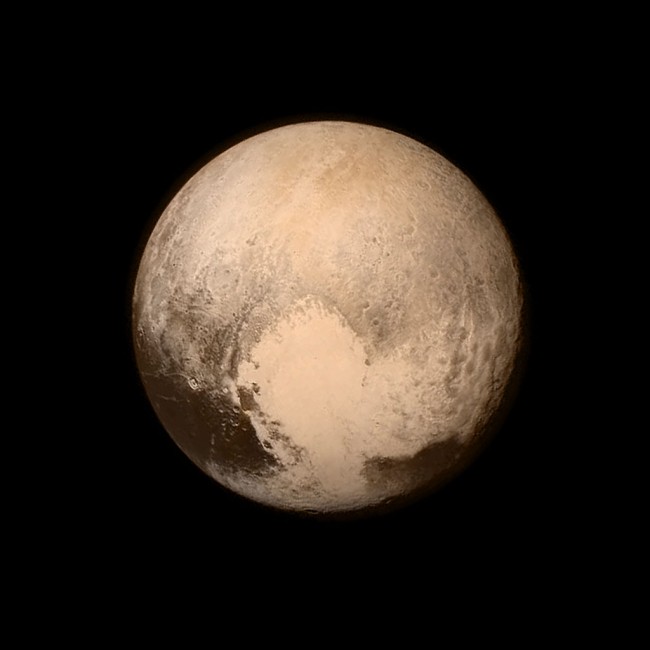-
Tips for becoming a good boxer - November 6, 2020
-
7 expert tips for making your hens night a memorable one - November 6, 2020
-
5 reasons to host your Christmas party on a cruise boat - November 6, 2020
-
What to do when you’re charged with a crime - November 6, 2020
-
Should you get one or multiple dogs? Here’s all you need to know - November 3, 2020
-
A Guide: How to Build Your Very Own Magic Mirror - February 14, 2019
-
Our Top Inspirational Baseball Stars - November 24, 2018
-
Five Tech Tools That Will Help You Turn Your Blog into a Business - November 24, 2018
-
How to Indulge on Vacation without Expanding Your Waist - November 9, 2018
-
5 Strategies for Businesses to Appeal to Today’s Increasingly Mobile-Crazed Customers - November 9, 2018
NASA detects X-ray emission from Pluto
Dwarf planet Pluto emits x-ray, observations using NASA’s Chandra X-ray Observatory suggest.
Advertisement
Based on the findings, the researchers said it is probable that other large Kuiper Belt Objects are doing the same. However, the signs of the possible atmosphere have already ignited the interests of the scientific community to investigate further about the X-ray emissions on Pluto.
“We’ve just detected, for the first time, X-rays coming from an object in our Kuiper Belt, and learned that Pluto is interacting with the solar wind in an unexpected and energetic fashion”, said said Chandra observation team leader Carey Lisse of the Johns Hopkins University Applied Physics Lab (JHUAPL) in Laurel, Maryland.
Scientists were so doubtful of finding X-rays coming from Pluto that the Chandra observations nearly did not happen. The Kuiper belt extends from the orbit of Neptune, at 30 times the distance of Earth from the Sun, to about 50 times the Earth-Sun distance. Having X-ray sources in the region will provide a deeper and slightly more different understanding of Pluto’s atmosphere.
As the craft headed out to the distant planet, which lies at its furthest point 7.5 billion kilometres (4.67 billion miles) away from Earth, Chandra astronomers observed Pluto on four separate occasions, finding evidence of an X-ray glow each time. The spacecraft itself carries an instrument created to measure that activity up-close – the aptly named Solar Wind Around Pluto (SWAP) – and scientists are using that data to craft a picture of Pluto that contains a very mild, close-in bowshock, where the solar wind first “meets” Pluto (similar to a shock wave that forms ahead of a supersonic aircraft) and a small wake or tail behind the planet.
However, Liss had led a research team that detected X-rays coming from a comet 20 years ago, so he knew interaction between gases from a small body and the solar wind can produce X-rays.
Instead, the low-energy photons might come from solar wind passing through an escaping atmosphere.
The controversial former planet Pluto is at it again. However, the New Horizons spacecraft which flew by Pluto last July 2015 suggests otherwise; it is highly likely that Pluto has an atmosphere.
While Pluto’s atmosphere is releasing enough gases to create X-rays, the solar wind at this distance is not thought to be strong enough to do so.
Prior to Chandra’s studies, the most distant solar system objects found to emit X-rays were Saturn and its ring system.
Advertisement
IN SPACE – JULY 14: In this handout provided by the National Aeronautics and Space Administration (NASA), Pluto almost fills the frame in this image from the Long Range Reconnaissance Imager (LORRI) aboard NASA’s New Horizons spacecraft, taken on July 13, 2015, when the spacecraft was 476,000 miles (768,000 kilometers) from the surface. Another is that interplanetary magnetic fields are focusing more particles than expected from the solar wind into the region around Pluto. The discovery could help explain much – if not all – of the X-ray “background noise” we detect in the Universe.




























